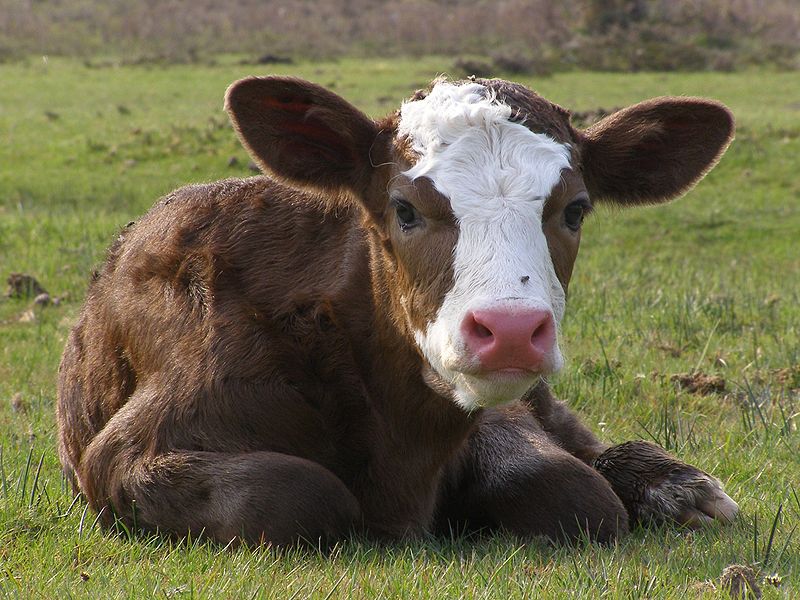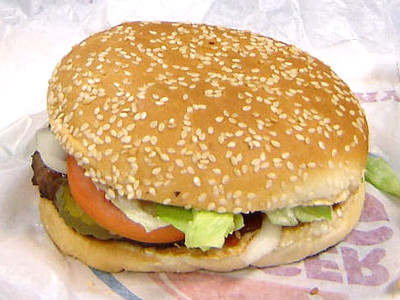Operation Consumption Liberation’s month of not consuming meat has ended. Before I move on to
December’s challenge, I wanted to dive into some of the ethical, environmental,
and health-related questions that pop up when assessing meat consumption in the
USA. Before I started this month, I
asked my currently, and formerly, vegetarian Facebook friends why they went
meatless. I only got three responses (FYI:
all three are no longer vegetarians), but I wanted to share a little of what
they said.
From my friend B.: “I started because I loved/love
animals and couldn't justify killing them just so I could eat. Then I lived in
a veggie house, so that made it even easier. I started eating meat again when I
realized (as sad as it sounds) that I didn't care enough to keep not eating
meat (which is a sad commentary, I think, on the ubiquity of meat in our
society).”
The reason B. became a vegetarian is the reason many people become vegetarians. Whether you ever went to Bible School or not, chances are you still are familiar with the Ten Commandments and the commandment “Thou shalt not kill.” Yes, this refers to killing other human beings, not animals. There’s the argument that the animal world is full of predators that kill prey—“if animals kill for food, why should we hold ourselves to a higher standard?” Still, many people struggle with the idea that the steak on their plate used to be a cow, and that this cow was bred, raised (often on unsuitable grain and supplements in the confined space of a feedlot), and killed explicitly so that humans could eat it. From a moral standpoint, eating animals presents a lot of grey area and conflicted emotions. I do not know if I could personally slaughter a cow, chicken, or fish. And I do occasionally wonder if I should only eat the animals I hypothetically could execute myself. By this rule, bugs would likely make up the bulk of the meat in my diet.
 | ||
| But I love you! (Credit: Jim Champion from Southampton, UK [CC-BY-SA-2.0], via Wikimedia Commons) |
The reason B. became a vegetarian is the reason many people become vegetarians. Whether you ever went to Bible School or not, chances are you still are familiar with the Ten Commandments and the commandment “Thou shalt not kill.” Yes, this refers to killing other human beings, not animals. There’s the argument that the animal world is full of predators that kill prey—“if animals kill for food, why should we hold ourselves to a higher standard?” Still, many people struggle with the idea that the steak on their plate used to be a cow, and that this cow was bred, raised (often on unsuitable grain and supplements in the confined space of a feedlot), and killed explicitly so that humans could eat it. From a moral standpoint, eating animals presents a lot of grey area and conflicted emotions. I do not know if I could personally slaughter a cow, chicken, or fish. And I do occasionally wonder if I should only eat the animals I hypothetically could execute myself. By this rule, bugs would likely make up the bulk of the meat in my diet.
Similar to B., my friend E. stopped eating meat after
seeing” too many horrific videos.” If
not for some severe biological anemia, she would probably still be a vegetarian
today. I know several women who began eating meat again due to problems related
to iron deficiency and anemia. Yes,
there are other sources of iron out there, but the body absorbs the iron found
in meats (i.e., heme iron) two to three times more efficiently than iron
derived from plants (i.e., non-heme iron).
In fact, consuming heme iron can actually increase your body’s ability
to absorb non-heme iron, while certain substances like calcium and phytates (an
antioxidant compound found in whole grains, legumes, nuts, and seeds) decrease the
absorption of non-heme iron when consumed in the same meal vitamin C may
increase it though. (Source here.) Iron deficiency and anemia afflict roughly 1/3
of the world’s female population, particularly women of reproductive age and pregnant women. (Source here.) Eating meat at times
is the difference between poor and good health.
Of course, eating meat can also be related to poor
health. My friend Q said he stopped eating
meat “to lower my cholesterol, but that’s before I discovered Cheerios.” Okay, he might have been joking, but even so,
he has a point. Several studies have
concluded that the more meat you eat (especially high-in-saturated-fat red
meat), the greater the risk of heart disease and cancer (see one such study). Meanwhile, boatloads
of studies have shown that a diet abundant in fruits and vegetables reduces the
risk of dying from most Western diseases: vegetarians often live longer than frequent
meat-eaters. (Source here.)
Michael Pollan discusses this need to recalibrate the
American diet in terms of the quantity of plants we consume versus meat in his book In Defense of Food. His first
guideline on how to eat: “Eat mostly plants, especially leaves.” His second?
“You are what what you eat eats too.” As
in, if you eat cow, you eat what the cow ate in its lifetime too. If you are nabbing a burger at Burger King,
know that the hamburger meat came from a cow that was fattened up on grain feed
in a feedlot, and that the cow almost certainly received antibiotics because
the cow’s body is designed to eat grass, not grain seed. It is entirely possible that the cow was given
hormones to “beef up” à la Barry Bonds, because 2/3 of the beef raised in the
US is on steroids, testosterone, or progesterone. (Source here.)
 |
| Bonds: HGH in action! (By flickr user druchoy [CC-BY-SA-2.0], via Wikimedia Commons) |
I don’t even have time to really jump into the
environmental impact of consuming meat, but consider this: according to
research by scholars at Dalhousie University in Nova Scotia, the livestock
sector is believed to produce 18 percent of global greenhouse gas emissions.
Beef accounts for 78% of these emissions, despite representing only 30% of the
meat consumption in the developed world. (Source here.) The meat production industry is also, as
Pollan puts it, “extravagantly wasteful” with water, grain, and antibiotics:
entities that are desperately needed in third world and disaster-afflicted
countries. To produce the hamburger
patty for one measly Whopper, it takes about 600 gallons of water. (Source here.) It is hard to want to eat that when you
consider the atrocious drought in Somalia and the Horn of Africa this year.
 |
| The water used to produce this single Whopper burger could provide one day's worth of the required H2O for survival to 934 130-pound people. |
Clearly, there are many factors to contemplate when
deciding whether or not to consume meat.
And there are also many choices you can make to reduce the negative health effects of meat consumption and to reduce your
meat-eating’s impact on the environment. (Start by calculating your diet's carbon footprint with this fun Carbon Calculator!) I plan on doing the following when I resume
eating meat today:
- Eat less meat. In particular, eating a 4-ounce or less serving of red meat (mammals) no more than once a week. For birds, fish, and crustaceans, no more than 3 servings a week of similar sizing. I can eat as many bugs as I want. This should not only be healthier for my body and the planet, but also for my wallet. Basically, I’m aspiring to be more of a flexitarian.
- Be more vigilant about where my meat comes from, as in the location and conditions in which the animal was raised in and produced in. This means I will do my best to eat meat from locally raised, hormone and antibiotic free, grass-fed, free-roaming, happy, healthy animals. This may increase my bill at the grocery store, or farmer’s market, or locavore-friendly restaurant, but I’ll be eating less meat in general to balance it out.
- Make vegetables and whole grains the star attraction on the dinner plate, not meat. I don’t know why I always feel like I need to serve meat to guests. Why can’t I just serve veggie chili or veggie pizzas?
I want to say one last thing before closing the book on
my meatless November: this month was relatively easy for me. It isn’t very hard to be a vegetarian for a
month. Eating out was the only thing
that was remotely difficult, and that wasn’t very hard at all. It might take a bit of a mental adjustment,
and you might need to learn a few vegetarian recipes, but anyone can do
this. I highly recommend that all people
re-examine their meat-eating habits and adopt Meatless Monday
or another meat-minimizing strategy for their diets.
I'll be posting about December's challenge before the weekend. Until then, here's one more picture of fantastic vegetarian soups I've made this month: Yam Peanut Stew, recipe suggested by Gretchen:
 |
| I know: it looks like baby food. But it is super yummy! |
No comments:
Post a Comment